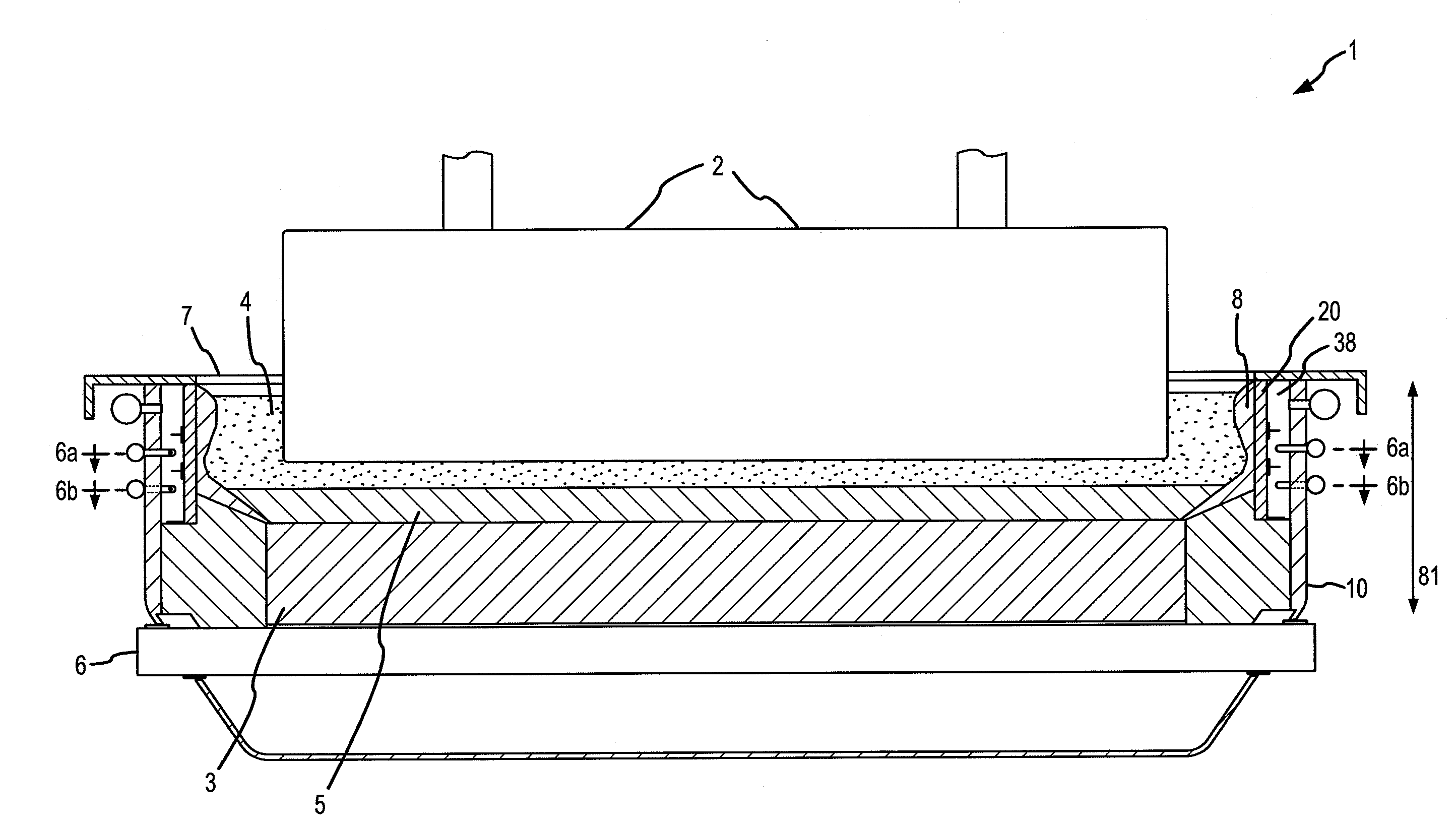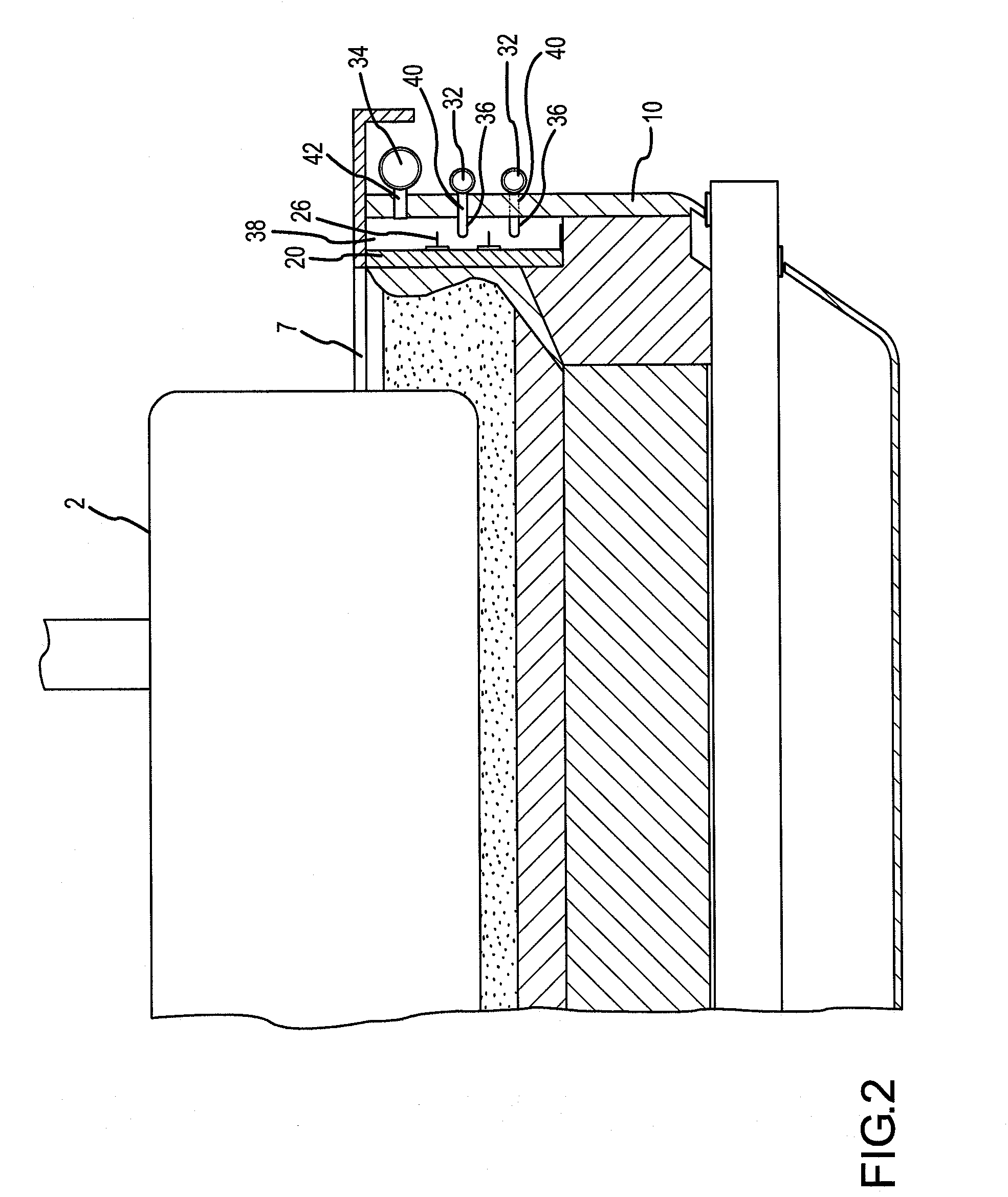Sidewall temperature control systems and methods and improved electrolysis cells relating to same
- Summary
- Abstract
- Description
- Claims
- Application Information
AI Technical Summary
Benefits of technology
Problems solved by technology
Method used
Image
Examples
Embodiment Construction
[0033]Reference will now be made to the accompanying drawings, which at least assist in illustrating various pertinent features of the present invention.
[0034]FIG. 1 illustrates an electrolytic aluminum production cell useful in accordance with the present invention. The electrolytic cell 1 includes an outer shell 10, an anode 2, a cathode 3, a current collector 6 interconnected to the cathode 3, and a top 7. A sidewall 20 is disposed adjacent the outer shell 10 and is spaced therefrom, thereby creating a gap 38 between the outer shell 10 and the sidewall 20. In operation, electric current is passed from the anode 2, through a molten electrolyte bath 4, thereby reducing a metal oxide (e.g., alumina) contained in the bath 4 to a molten metal 5 (e.g., aluminum). A ledge 8 of frozen electrolyte (e.g., cryolite) forms during operation of the cell. The formation of the ledge 8 and the ledge's profile is facilitated via the supply of coolant to the sidewall 20.
[0035]More particularly and ...
PUM
| Property | Measurement | Unit |
|---|---|---|
| Temperature | aaaaa | aaaaa |
| Flow rate | aaaaa | aaaaa |
| Trajectory | aaaaa | aaaaa |
Abstract
Description
Claims
Application Information
 Login to View More
Login to View More - R&D
- Intellectual Property
- Life Sciences
- Materials
- Tech Scout
- Unparalleled Data Quality
- Higher Quality Content
- 60% Fewer Hallucinations
Browse by: Latest US Patents, China's latest patents, Technical Efficacy Thesaurus, Application Domain, Technology Topic, Popular Technical Reports.
© 2025 PatSnap. All rights reserved.Legal|Privacy policy|Modern Slavery Act Transparency Statement|Sitemap|About US| Contact US: help@patsnap.com



